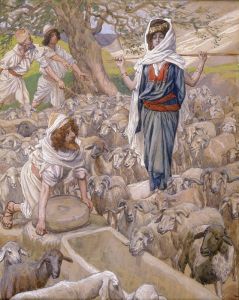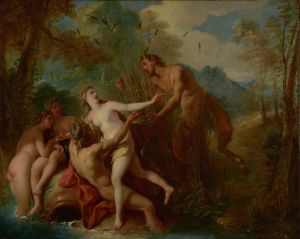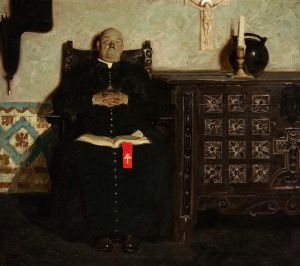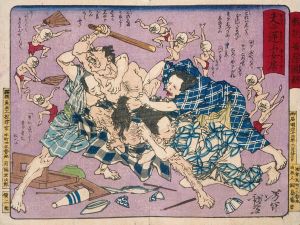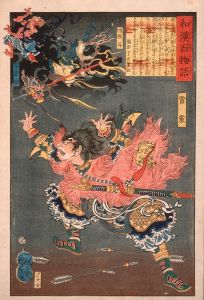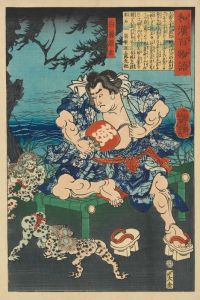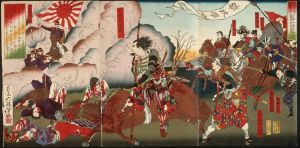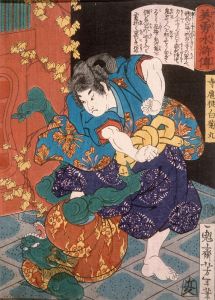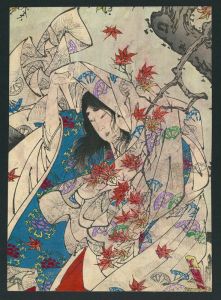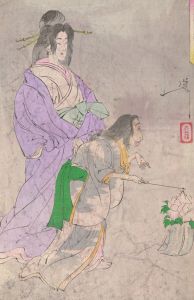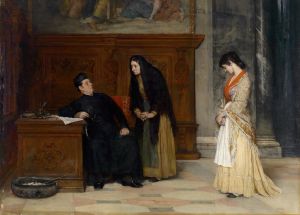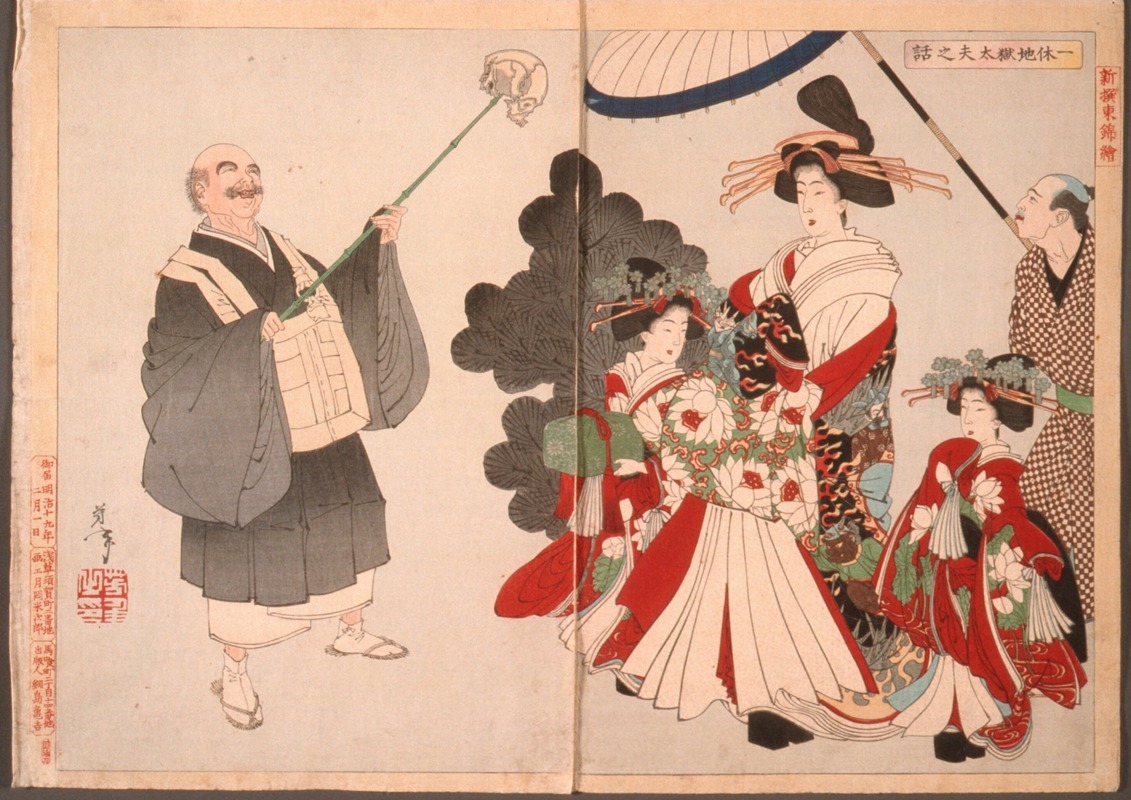
The Story of the Courtesan Jigokudayū and Priest Ikkyū
A hand-painted replica of Tsukioka Yoshitoshi’s masterpiece The Story of the Courtesan Jigokudayū and Priest Ikkyū, meticulously crafted by professional artists to capture the true essence of the original. Each piece is created with museum-quality canvas and rare mineral pigments, carefully painted by experienced artists with delicate brushstrokes and rich, layered colors to perfectly recreate the texture of the original artwork. Unlike machine-printed reproductions, this hand-painted version brings the painting to life, infused with the artist’s emotions and skill in every stroke. Whether for personal collection or home decoration, it instantly elevates the artistic atmosphere of any space.
"The Story of the Courtesan Jigokudayū and Priest Ikkyū" is a woodblock print by the renowned Japanese artist Tsukioka Yoshitoshi, who is celebrated for his innovative and expressive works during the late Edo and early Meiji periods. Yoshitoshi, born in 1839 and passing in 1892, is often regarded as the last great master of the ukiyo-e genre of woodblock printing and painting.
This particular artwork is part of Yoshitoshi's series "New Forms of Thirty-Six Ghosts" (Shinkei Sanjūrokkaisen), which was published between 1889 and 1892. The series is known for its exploration of supernatural themes, ghost stories, and historical legends, all depicted with Yoshitoshi's distinctive style that combines traditional techniques with a modern sensibility.
The print illustrates a legendary encounter between the famous courtesan Jigokudayū and the Zen Buddhist monk Ikkyū Sōjun. Jigokudayū, whose name translates to "Hell Courtesan," is a figure from Japanese folklore known for her beauty and her association with the underworld. According to legend, she was a high-ranking courtesan who lived during the Muromachi period (1336-1573) and was known for her intelligence and wit.
Ikkyū Sōjun, on the other hand, was a historical figure, a Zen Buddhist monk who lived from 1394 to 1481. He is remembered for his eccentricity, poetry, and deep understanding of Zen teachings. Ikkyū often challenged the conventions of his time and was known for his unorthodox approach to spirituality.
The story depicted in Yoshitoshi's print is based on a popular tale in which Ikkyū encounters Jigokudayū. The monk, known for his penetrating insight, sees through the courtesan's worldly facade and recognizes her inner suffering and potential for enlightenment. In some versions of the story, Ikkyū's interaction with Jigokudayū leads her to a path of spiritual awakening, highlighting themes of redemption and the transformative power of compassion.
Yoshitoshi's depiction captures the dramatic and emotional essence of this encounter. His use of vivid colors, intricate patterns, and expressive figures brings the legendary meeting to life, reflecting both the tension and the underlying humanity of the characters. The print exemplifies Yoshitoshi's skill in storytelling through visual art, as well as his ability to convey complex emotions and narratives within a single frame.
"The Story of the Courtesan Jigokudayū and Priest Ikkyū" is a testament to Yoshitoshi's mastery of the woodblock print medium and his enduring interest in themes of the supernatural, morality, and the human condition. Through this work, Yoshitoshi not only preserves a piece of Japanese folklore but also invites viewers to reflect on the deeper philosophical questions posed by the story.





